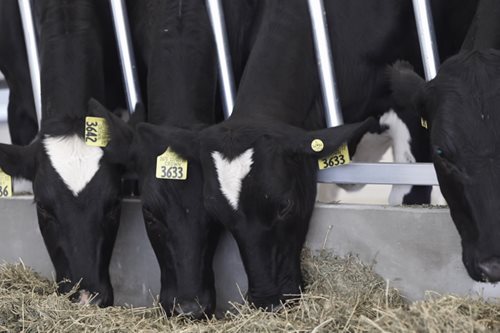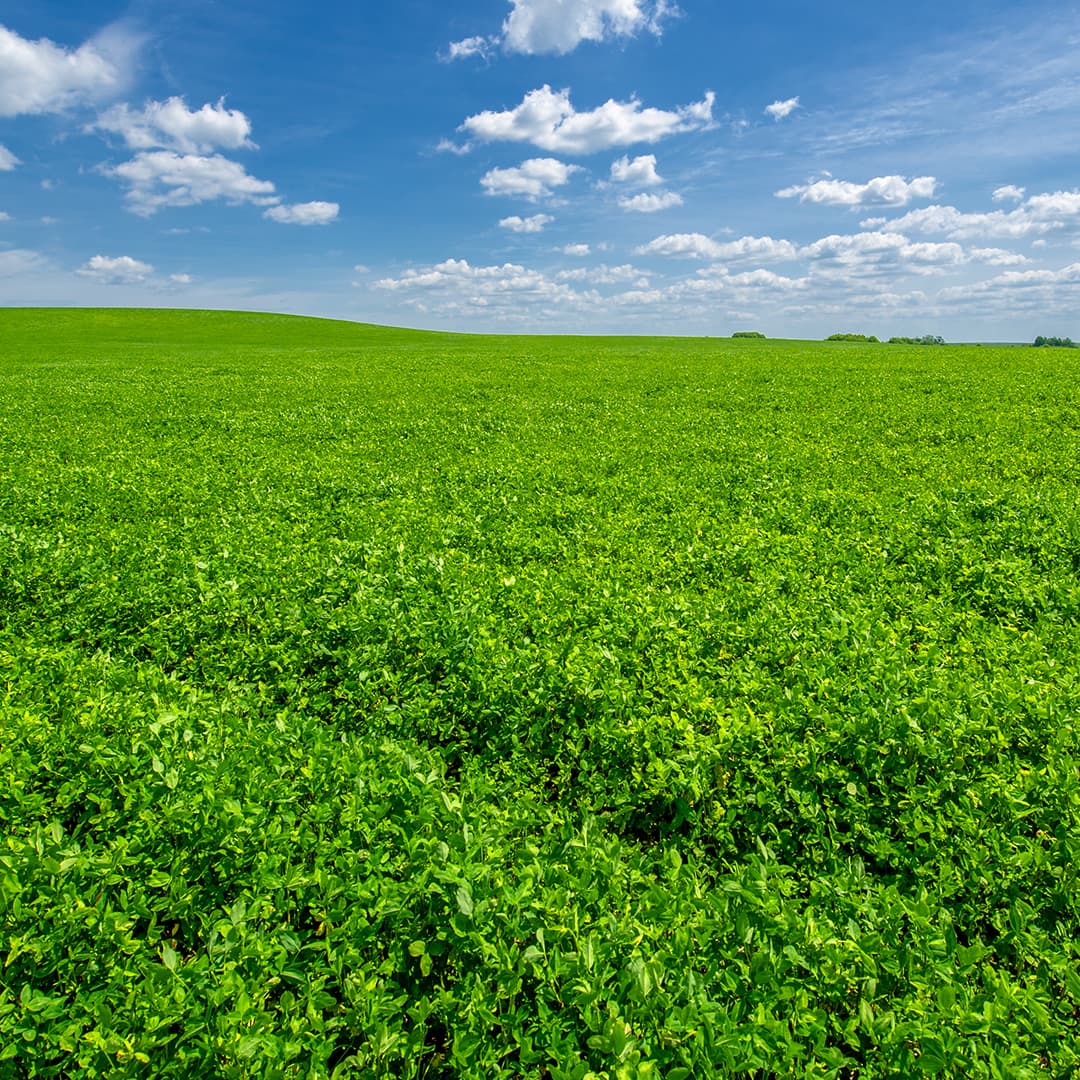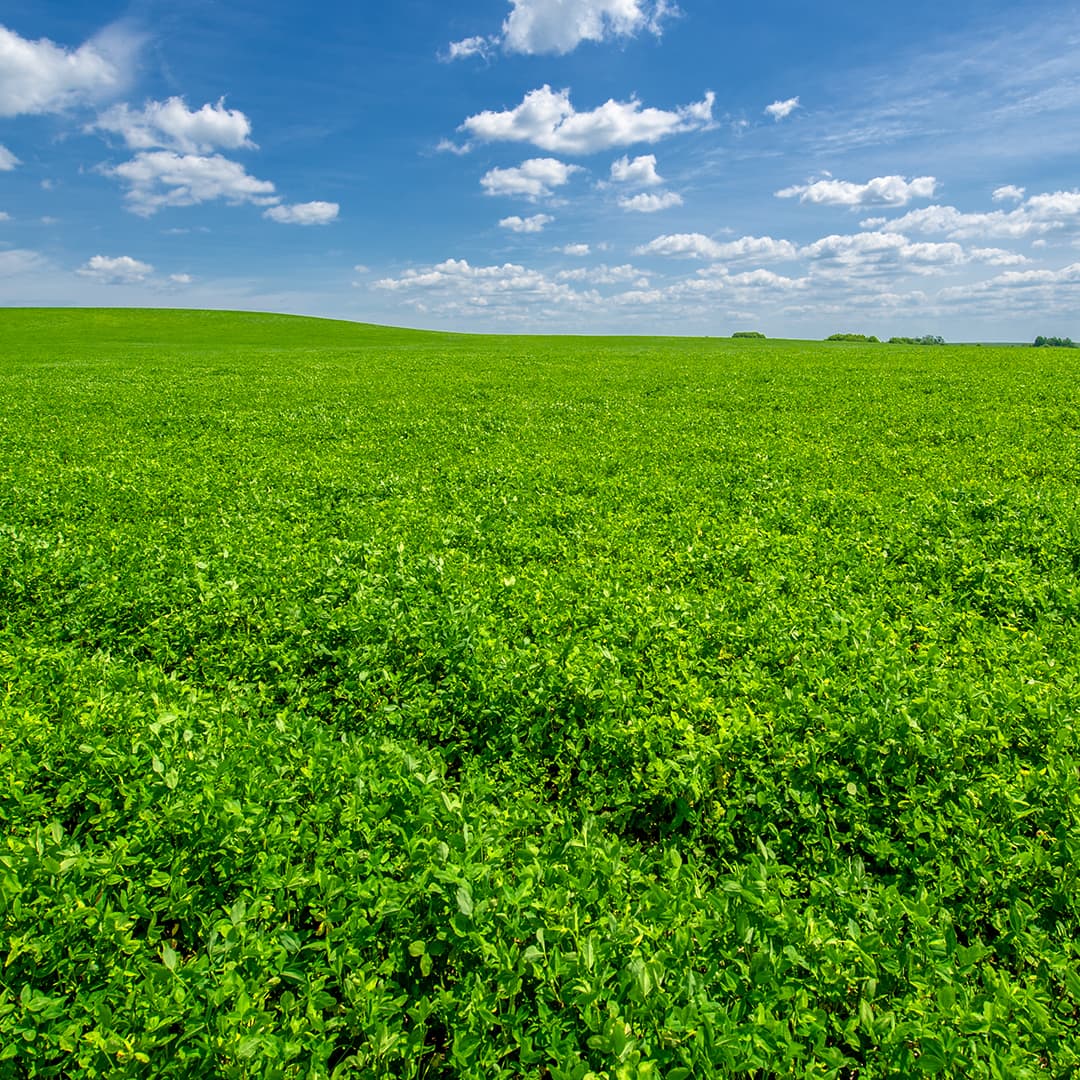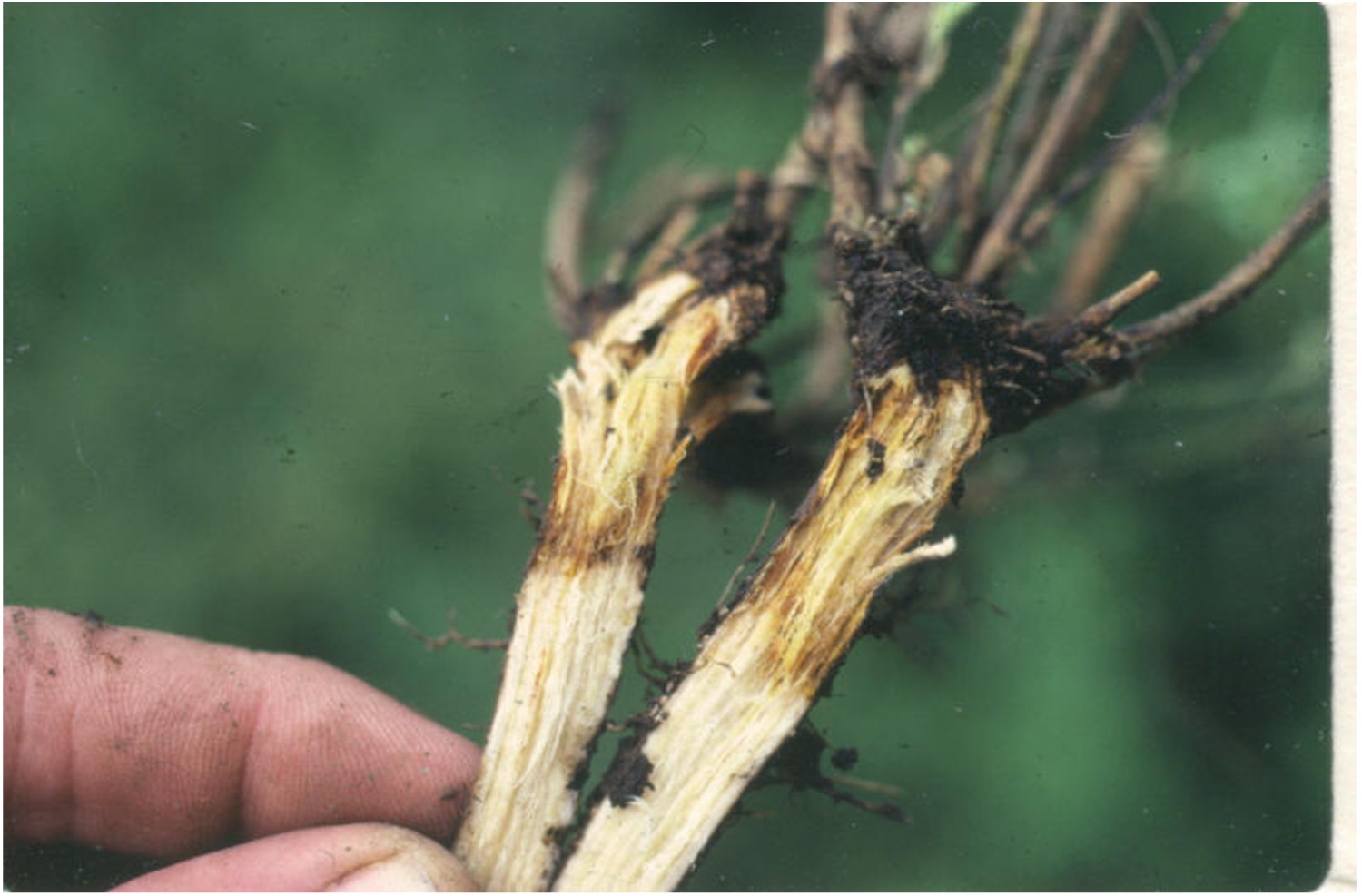Research at the USDA Dairy Forage Research Center has shown that dairy diets where at least ¼ of the forage is from alfalfa and ¼ is from corn silage produce the most milk (with the remaining half being either forage). While there has been some interest in corn silage, many dairymen are realizing the benefits of maximizing the alfalfa in dairy rations.
Alfalfa is a high energy forage that provides fiber content and adequate particle size without wasting nutrient density. Inadequate fiber in lactation rations can cause erratic dry matter intakes, decreased milk yields, lowered milk fat production and health problems (acidosis, laminitis, ketosis, displaced abomasums). Subacute acidosis can cause lowered production, health problems, and higher culling rates. Thirty five percent of cows in confinement operations are believed to have laminitis which is caused primarily by acidosis. Laminitis is a primary cause of lameness in dairy cattle and can cost the dairy producer as much as $630/case in delayed reproduction, body weight loss, and decreased milk production.
Alfalfa further reduces acidosis and associated health problems because it has a high buffering capacity. In addition, the coarse structural fiber of alfalfa stimulates chewing and salivation which also increase rumen buffering.
Alfalfa fiber is rapidly digested so that feed intake is stimulated more than from forages with slower fiber digestion. Slower fiber digestion or higher fiber content in a feedstuff can reduce feed intake and milk production.
In addition, alfalfa has high protein content with a high proportion that escapes rumen digestion (especially in hay) and is available directly to the cow.
Thus many dairymen are realizing that maximizing alfalfa in dairy rations increases milk production and herd health resulting in more profit.



